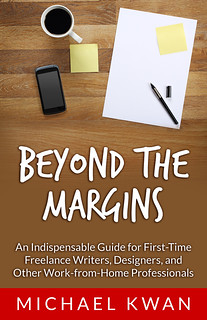Just as actors may have a certain method to approaching certain roles, freelance writers also have methods for approaching different kinds of work. When it comes to feature articles, I tend to go through the same progression of steps, regardless of the subject manner. I am not necessarily stating that this is the best method, per se, but it’s the one that has served me quite well in my freelance writing career.
Before I dive into my procedure for writing feature articles, it’d probably be a good idea for me to define exactly what a feature article is in the first place. Generally speaking, a feature article is an article that is written to entertain or inform the reader. It may be related to current events or it could be a topic of general interest. The line between a feature article and a keyword article can also get quite muddled, because the two can really be one and the same. For example, I wrote a Nintendo DS walkthrough a short while back for LoveToKnow Video Games. That is a keyword article, but it is also a feature article.
So, how do you go about writing a feature article? Let me describe my personal method.
1. Research the Topic
Before you can write an article of any value to the reader, it is imperative that you research the topic. It certainly helps if you are already familiar with the subject matter, like when I wrote about Guitar Hero for the PSP, but it’s still important to gain as much knowledge on the subject as possible. Don’t overdo it — that’s a waste of time — but research enough that you’ll be able to produce an intelligent, insightful, and useful article.
2. Stop and Think about What to Say
Before I get down to any actual writing, I typically step away from the computer and just do a little brainstorming. I consider the angle that I am going to take with the article, what points I want to discuss, and how I will be able to make my feature article stand out from other articles that are covering the same topic. Depending on the subject, this moment of thought can last anywhere from a couple of minutes to half an hour. For more intense topics, I may even sleep on it and write the article the next day.
3. Produce a Very Rough Outline
This varies considerably from topic to topic, but it is sometimes helpful to produce a rough outline. By using the inverted triangle for introducing the subject, adhering to an academic essay style of writing, you can be sure that your article is coherent and logical. For blog posts like these, my outline is comprised of the section headings only.
4. Complete the First Draft in One Sitting
Whenever I write a feature article, product review, blog post, or whatever, I make an effort to complete the first draft in a single sitting. I do this for two reasons. First, it forces me to just get it done. It’s not important for the first draft to be absolutely perfect; it’s more important to get your thoughts down on paper (or on the computer screen). Second, by getting the first draft written in a single sitting, the “voice” of the article will be more consistent. This is also why I tend to write my articles from beginning to end, rather than hopping around the different sections. This way, the transition from one section to the next is smoother.
5. Proofread, Edit, Revise, and Alter
If time allows, it is often a good idea to revisit your feature article with fresh eyes on a new day. I realize that this almost contradicts the previous point, but by looking at your work with new eyes, you may be able to catch errors and inconsistencies that you may not have found otherwise. Edit and revise as you see fit. When you think you are done, read the article through from beginning to end once more to make sure that it is still coherent, logical, and entertaining.
6. Be Satisfied and Move On
Believe it or not, it is impossible to write the perfect feature article. You can write a good one, even a great one, but it will never be perfect. One of the greatest keys to freelance writing success is being able to produce good articles in a timely fashion. If you get hung up on the tiniest of details, you will never get your work done. Be satisfied with what you have accomplished and then take a well-deserved break. It won’t be long before you’ll have another feature article to write.




#2 is the most difficult. Away from the computer, I can come up with lots of ideas. Nearly the whole article just flows in my head. And I repeat and repeat, in the hopes of remembering it all.
Then, I sit in front of the computer and my mind turns to mush.
I experince the same thing. I need to start keeping note pads on the nightstaand. Becasue by the time I get to the computer the next day, I have nothing but crap left.
I also read on ProBlogger not to rush. To take your time. I am definitely going to adopt the complete the rough draft in one sitting technique.
The outline is the best step to me. It really is the productive phase.
Great approach. What happens when you are forced to end abruptly due to your subject matter hitting to much of a personal cord to finish? To be cont’d or stash until you can handle it.
If you have to stop, then stop. Ideally, you want to avoid these kinds of problem areas so that you are not forced to make that kind of decision.
I write articles based on my mood if i dont want to write i dont push myself or else i will got very poor idea.